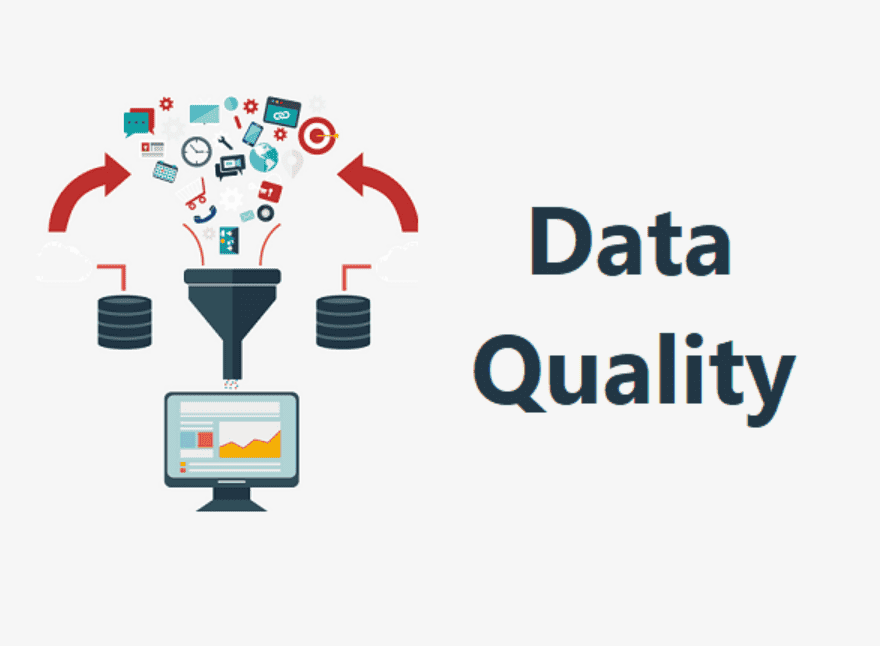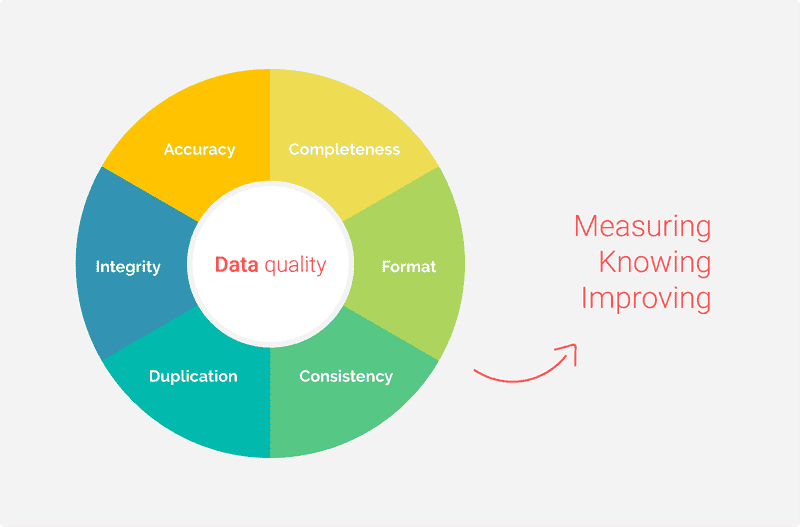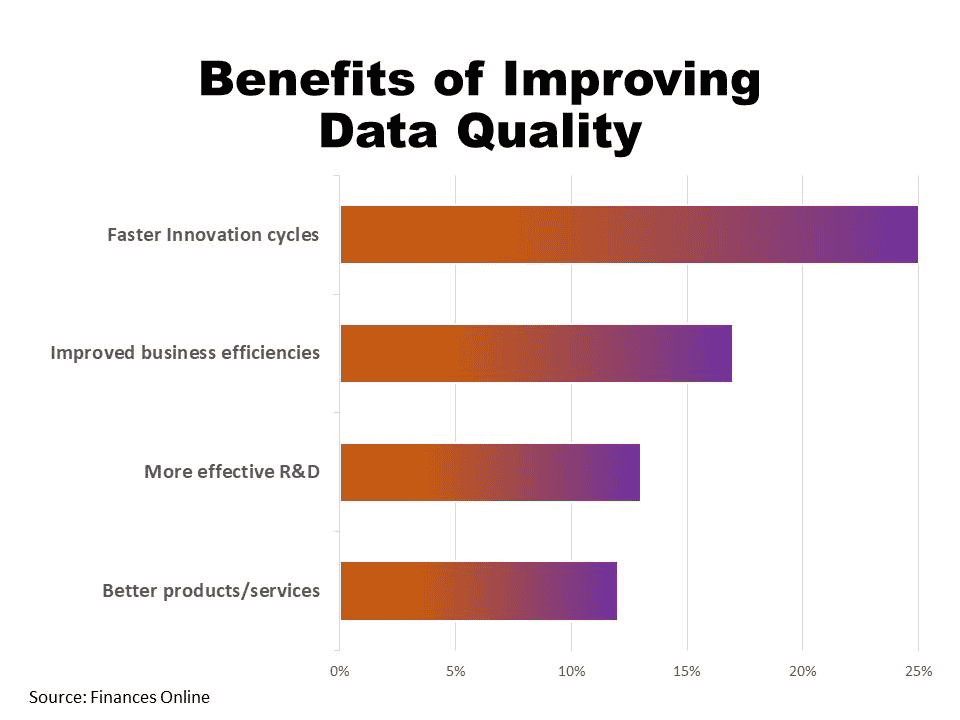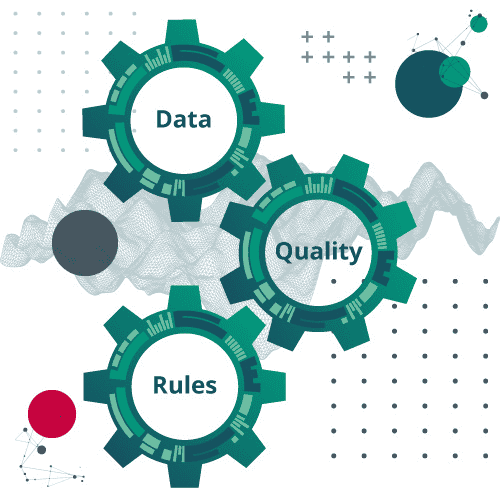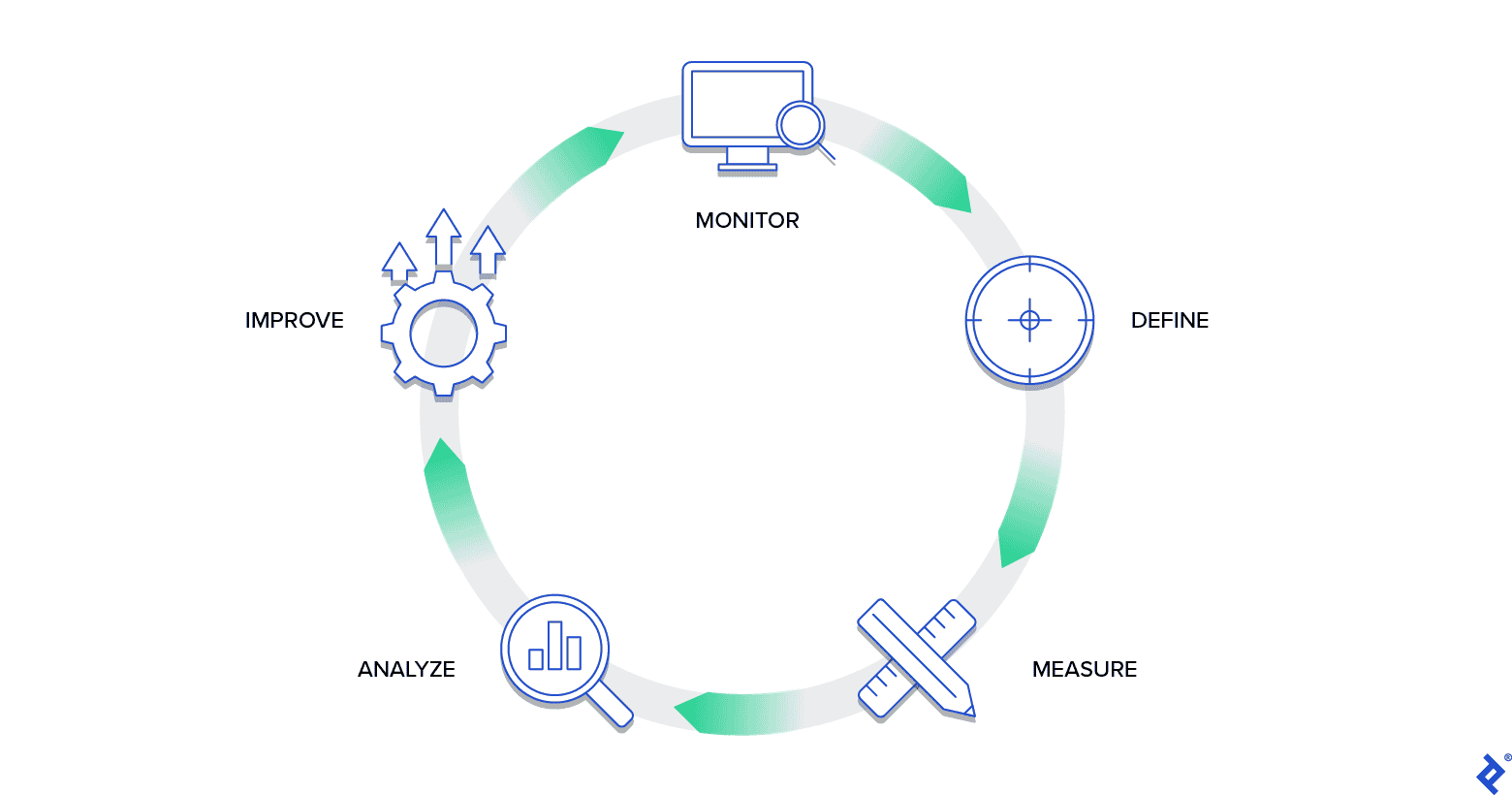Data quality plays a significant role in helping organizations strategize their policies that can keep them ahead of the crowd. Hence, companies need to adopt the right strategies that can help them filter the relevant data from the unwanted ones and get accurate and precise output.
The Significance of Data Quality: Unlocking the 12 Ways to Improve Data Quality
Data is the new gold, and every organization wants to harness it to gain a competitive edge. At the same time, the volume of data we receive is not always relevant. Hence, the quality of data is significant here.
Quality data fuels business decisions, informs scientific research, drives technological innovations, and shapes our understanding of the world. The significance of data quality lies at the heart of this digital age, as it determines the reliability and trustworthiness of the information we rely on.
Whether you are a business executive making critical choices, a scientist conducting groundbreaking research, or simply an individual seeking accurate information, data quality is a paramount concern.
In this blog, we will explore the profound significance of data quality, its relevance in various domains, and the far-reaching impact it has on our daily lives.
The Relevance of Data Quality
Data quality refers to the accuracy, completeness, consistency, and reliability of data. It is about ensuring that the data you collect, store, and analyze is free from errors and bias, making it a true reflection of reality. In an era where data is abundant, the relevance of data quality becomes evident in various aspects of our lives
Business Decision-Making
In the corporate world, data quality is the cornerstone of effective decision-making. Business leaders rely on data to identify trends target markets, and assess the performance of their products and services. Flawed data can lead to misguided strategies, financial losses, and missed opportunities.
Healthcare and Medical Research
In the healthcare sector, patient data is crucial for diagnosis, treatment, and medical research. Poor data quality can lead to medical errors, misdiagnoses, and compromised patient care. Additionally, accurate data is essential for conducting clinical trials and advancing medical knowledge.
Scientific Research
Researchers across disciplines depend on data to support their findings and discoveries. High-quality data is essential for replicable experiments, robust statistical analysis, and the advancement of scientific knowledge.
Government and Policy-Making
Governments use data to formulate policies, allocate resources, and measure the impact of public programs. Data quality is pivotal in ensuring that public funds are used efficiently and that policies are effective in addressing societal challenges.
Personal Decision-Making
On a personal level, we encounter the significance of data quality in our everyday choices. Whether it’s relying on GPS navigation, reading product reviews, or assessing the reliability of news sources, accurate and trustworthy data influences our decisions.
The Significance of Data Quality
Now that we’ve established its relevance let’s delve into the significance of data quality:
Trust and Credibility
High-quality data builds trust and credibility. Whether it’s customers trusting a business’s claims, patients relying on medical advice, or the public having confidence in government statistics, data quality is fundamental to maintaining trust.
Cost Savings
Poor data quality can be costly. Inaccurate customer information can lead to wasted marketing efforts, while flawed inventory data can result in overstocking or understocking of products. Correcting errors after the fact is often more expensive than ensuring data quality from the outset.
Improved Decision-Making
Reliable data leads to informed and confident decision-making. It enables organizations to make strategic choices, allocate resources efficiently, and respond to market dynamics promptly.
Enhanced Innovation
Quality data is the bedrock of innovation. It allows businesses to identify emerging trends, develop innovative products, and stay ahead of the competition. In the scientific realm, accurate data fuels breakthrough discoveries.
Ethical Considerations
Data quality is closely tied to ethical considerations, especially in fields like healthcare and AI. Biased or incomplete data can perpetuate inequalities and lead to discriminatory outcomes.
12 Proven Strategies to Enhance Data Quality
In our quest for excellence in data management, we present a comprehensive guide on how to improve data quality. Data is the lifeblood of any organization, and ensuring its accuracy, reliability, and consistency is paramount. Our strategies will help you not only maintain high-quality data but also outrank other resources on the web.
1. Data Cleansing: The Foundation of Data Quality
Data cleansing, or data scrubbing, involves identifying and rectifying errors and inconsistencies in your datasets. This includes removing duplicates, correcting typos, and standardizing data formats. It forms the bedrock of data quality improvement.
2. Implement Data Validation Rules
To maintain data integrity, establish strict validation rules. This ensures that the data entered meets predefined criteria. Implementing validation rules helps prevent incorrect or incomplete data from being added to your databases.
3. Regular Data Audits
Conduct regular data audits to identify issues and discrepancies. This proactive approach allows you to detect and address problems before they compromise data quality.
4. Data Governance Framework
Implement a robust data governance framework. Define data ownership, access rights, and responsibilities within your organization. A well-structured framework ensures accountability and promotes data quality.
5. Data Quality Tools
Invest in quality data management tools. Solutions like data profiling software, data cleansing tools, and data quality dashboards can significantly enhance your data quality control efforts.
mermaid Copy code
graph TD; A[Data Cleansing] B[Implement Validation Rules] C[Regular Data Audits] D[Data Governance Framework] E[Data Quality Tools] A –> B; B –> C; C –> D; D –> E;
6. Data Standardization
Standardize data formats, units, and naming conventions. This consistency makes data more accessible and understandable, improving overall data quality.
7. Error Handling Protocols
Develop clear error-handling protocols. Define how errors will be logged, reported, and rectified. A streamlined process ensures swift correction of data anomalies.
8. Data Training and Awareness
Invest in training for your staff. Ensure that everyone handling data understands its importance and the role it plays in maintaining data quality.
9. Data Documentation
Comprehensive data documentation is essential. Create data dictionaries and metadata repositories to help users understand the data’s structure and context.
10. Data Quality KPIs
Define Key Performance Indicators (KPIs) to measure data quality. Regularly monitor and report on these metrics to ensure continuous improvement.
11. Data Quality Culture
Foster a data quality culture within your organization. Encourage a mindset that values data accuracy and reliability at every level.
12. Data Quality Assurance Team
Establish a dedicated data quality assurance team. Their role is to oversee and enforce data quality standards, conduct audits, and drive continuous improvement.
How to Improve Data Quality in a Data Warehouse
Improving data quality in a data warehouse is essential for accurate analytics and reporting. Here’s how:
Data Profiling
Start by analyzing your data to understand its quality. Identify anomalies, inconsistencies, and missing values.
Data Cleansing
Implement data cleansing processes to remove duplicates, correct errors, and standardize data formats.
Data Validation
Set up validation rules to ensure that data entering the warehouse meets predefined criteria.
Data Governance
Establish data governance policies to define roles, responsibilities, and data ownership within your organization.
ETL (Extract, Transform, Load) Processes
Enhance ETL processes to ensure data quality checks are performed during data ingestion.
Data Quality Tools
Invest in data quality tools and software to automate and streamline data quality management.
Regular Audits
Conduct periodic data audits to monitor and maintain data quality over time.
How to Improve Data Quality in Salesforce
Maintaining high data quality in Salesforce is crucial for effective customer relationship management. Follow these steps:
Data Entry Standards
Define and enforce strict data entry standards to prevent inaccuracies at the source.
Data Validation Rules
Implement validation rules within Salesforce to ensure data accuracy during data entry.
Duplicate Detection
Activate Salesforce’s built-in duplicate detection tools to identify and merge duplicate records.
Data Cleaning
Regularly clean and update data to remove outdated or incorrect information.
User Training
Train your Salesforce users on data quality best practices to minimize errors.
Third-party Data Tools
Consider using third-party data quality tools that integrate with Salesforce to enhance data accuracy.
How to Improve Data Quality in Healthcare
Data quality is critical in healthcare for patient safety and effective treatment. Here’s how to improve it:
Standardize Data
Adopt standardized medical coding systems and terminologies to ensure consistent data entry.
EHR (Electronic Health Records) Validation
Implement validation checks in EHR systems to catch errors during data entry.
Data Governance
Develop strict data governance policies to safeguard patient data and ensure compliance with regulations like HIPAA.
Interoperability
Ensure that different healthcare systems can exchange data seamlessly to prevent data discrepancies.
Data Security
Prioritize data security to protect sensitive patient information from breaches or unauthorized access.
Quality Assurance Teams
Assign dedicated teams to monitor and maintain data quality in healthcare databases.
How to Improve Data Quality Using Machine Learning
Machine learning can enhance data quality through automation. Here’s how:
Data Cleaning Models
Build ML models for data cleaning tasks, such as outlier detection and imputation of missing values.
Data Validation
Train models to validate data based on predefined rules and patterns.
Anomaly Detection
Implement anomaly detection algorithms to identify unusual data points.
Predictive Data Quality
Use machine learning to predict data quality issues before they occur, allowing proactive corrections.
Continuous Learning
Develop models that continuously learn from data updates to adapt to changing data quality patterns.
How to Improve the Quality of Data in Experiments
Accurate experimental data is vital for scientific research. Improve data quality with these steps:
Experimental Design
Carefully plan and design experiments to minimize external factors that could affect data quality.
Data Collection Protocols
Standardize data collection procedures to ensure consistency.
Calibration and Control
Regularly calibrate instruments and use control samples to validate data accuracy.
Data Validation
Implement data validation checks during data collection to catch errors in real-time.
Data Logging
Maintain detailed and accurate logs of all experimental parameters and conditions.
Peer Review
Encourage peer review of experimental procedures and data to identify and correct errors.
By following these guidelines, you can significantly improve data quality in various domains, ensuring that your data is reliable and accurate for analysis and decision-making.
Read Blog: All You Need To Know About Data Quality Framework and Its Implementation
FAQs
What Are The 5 Techniques to Ensure High-Quality Data?
Ensure data quality by employing techniques like data cleansing, validation rules, regular audits, data governance, and the use of data quality tools to maintain accurate and reliable data.
How Do You Fix Poor Data Quality?
To rectify poor data quality, start by identifying and correcting errors, removing duplicates, implementing data validation, establishing data governance, and conducting regular data audits.
What Are The 7 Factors of Data Quality?
Data quality relies on factors such as accuracy, completeness, consistency, reliability, timeliness, relevance, and usability to ensure that data is trustworthy and fit for its intended purpose.
Conclusion
Improving data quality is an ongoing journey. By following these tips, you’ll not only enhance the accuracy and reliability of your data but also empower your organization to make informed decisions based on high-quality data. Start implementing these strategies today to unlock the full potential of your data assets.

